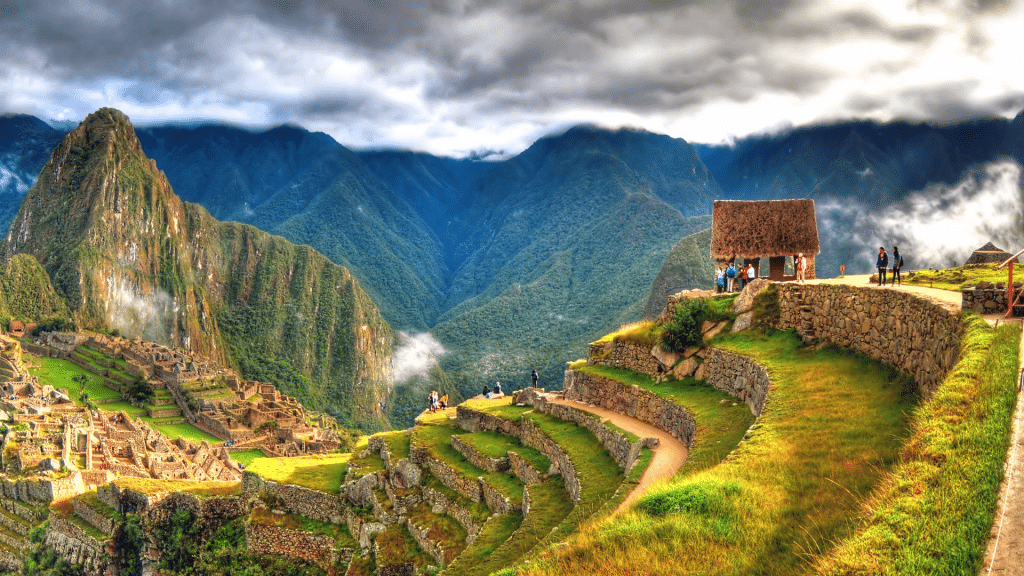Some places grab your attention at first glance, and Peru is one of them. There is something about it that feels alive in a different way.
Every corner seems to tell a different story, full of details that do not always make the headlines but leave a lasting impression.
If you enjoy finding out what makes a place truly unique, you are in for an eye-opening and colorful ride through one of South America’s brightest gems.
Let’s begin with the amazing geography that shapes every part of this vibrant country.
Geographic Facts
Look for features like coastal deserts, towering Andes mountains, and lush rainforests that make Peru one of the most diverse landscapes in South America.
1. Peru Lies on the West Coast of South America
Peru is located on the western edge of South America, offering incredible geographic and ecological variety.
- The Pacific Ocean affects Peru’s weather and sea life, with deserts, beaches, and lots of fish.
- The land rises from flat coast to tall mountains and thick jungle, full of plants and animals.
2. One Country, Three Unique Natural Regions
Peru has three distinct geographic regions, each with its own climate and culture.
- The costa is dry and coastal, the sierra is cool and mountainous, and the selva is humid and forested.
- These zones create Peru’s rich mix of landscapes, lifestyles, and ecosystems within one country.
3. The Andes Mountains Dominate Peru’s Landscape
The Andes Mountains shape Peru’s landscape and culture. Running north to south, the Andes include Mount Huascarán, Peru’s highest peak.
These mountains influence the climate, support terraced farming, and provide vital water resources.
4. Sharing Land with Five South American Neighbours
Peru shares borders with five countries in South America. It is next to Ecuador, Colombia, Brazil, Bolivia, and Chile.
Its location helps it connect with other cultures, trade partners, and shared environments like the Amazon and the Andes.
5. Lake Titicaca is the World’s Highest Navigable Lake
Lake Titicaca is the highest lake in the world where boats can travel on. It sits between Peru and Bolivia, high in the mountains.
Indigenous people, like the Uros, live on floating islands made of reeds. The lake is full of life and old stories. Inca legends say it’s where the sun god was born.
6. Peru’s Coast is Dry but Rich in Marine Life
Peru’s dry coast is full of sea life because of the Humboldt Current.
- Cold ocean water brings food for fish, birds, and sea animals.
- Fishing is important, and bird droppings are used as natural fertilizer.
7. The Amazon River Begins in Peru
The Amazon River, the longest in the world, begins in Peru’s Andes mountains.
It flows through thick jungle and supports animals, plants, and local people. Peru’s rivers also help with travel in the rainforest.
Nature & Wildlife
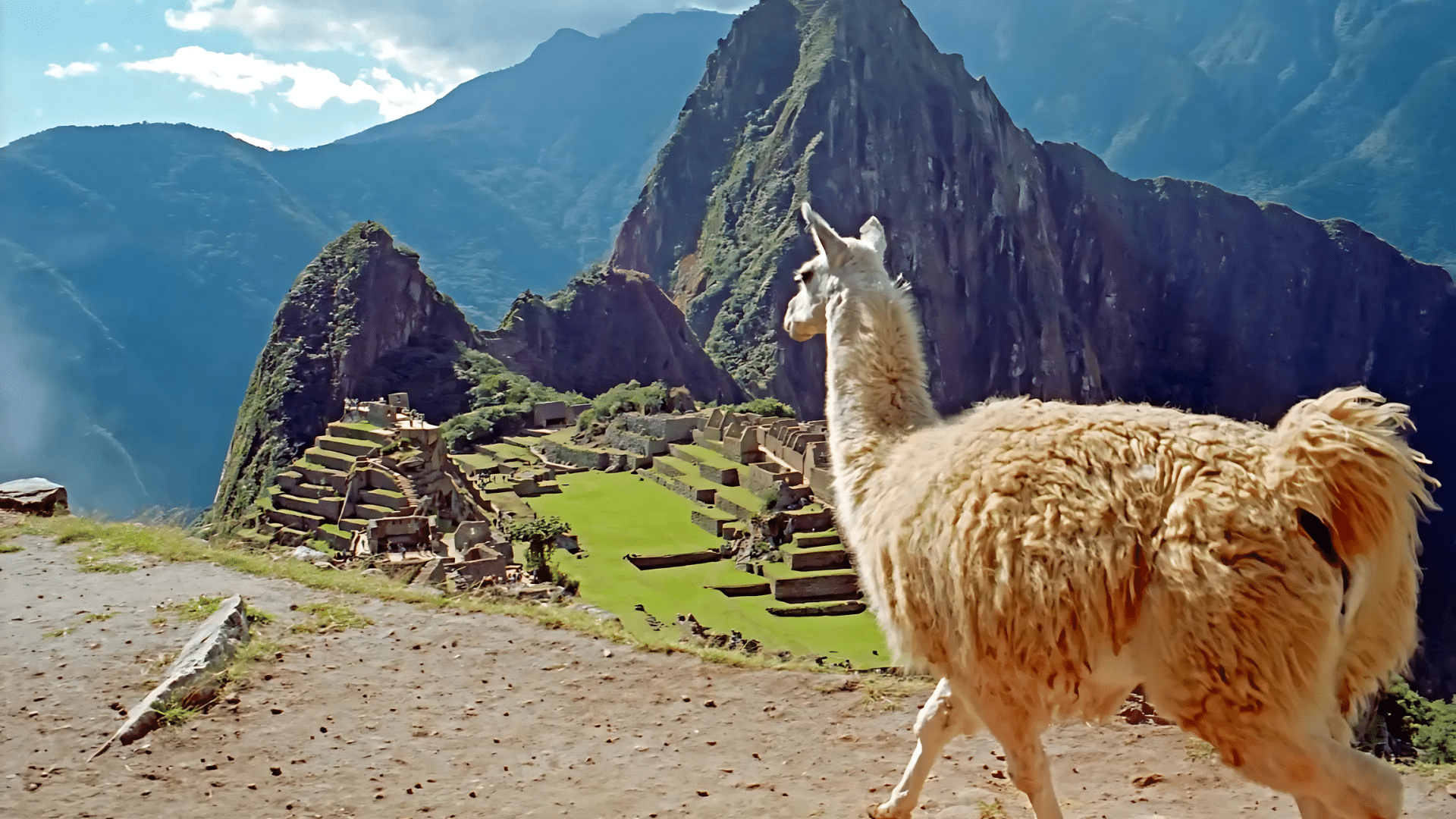
Peru is home to amazing animals, rare plants, and rich rainforests. From mountain llamas to jungle jaguars, its nature is full of surprises.
Here are some fun and interesting facts about Peru’s wildlife and natural wonders.
8. Nearly 60% of Peru is Covered by the Amazon Rainforest
This vast rainforest spans most of the country, sheltering countless species and Indigenous tribes. It also plays a major role in balancing the planet’s climate and biodiversity.
- It is home to many plants, animals, and tribes still living traditionally.
- The rainforest helps protect Earth’s climate and biodiversity.
9. The Puya Raimondi Blooms Once Every 100 Years
The Puya Raimondi is a giant plant that grows high in the Andes mountains of Peru. It can reach over 30 feet tall and blooms just once every 100 years.
When it finally flowers, it shows off thousands of beautiful blooms before dying. This rare and amazing plant is a symbol of nature’s patience and beauty.
10. Peru is One of the Most Biodiverse Countries
Peru is full of different types of nature, from snowy mountains to steamy jungles. Because of this, it has thousands of birds, animals, and plants, many of which live nowhere else.
Protected parks and reserves help keep these living things safe. Scientists and nature lovers from all over the world visit Peru to learn more about its amazing wildlife.
11. The Amazon in Peru Still Holds Unknown Species
Peru’s Amazon is full of life, with many species still undiscovered.
- Scientists keep finding new animals and plants in the deep rainforest.
- Hard-to-reach areas help protect nature from human activity.
12. Llamas, Alpacas, and Vicuñas are Native to the Andes
These three camelids, lamas, alpacas, and vicuñas, have been part of Andean life for centuries. Llamas carry loads, alpacas provide soft wool, and vicuñas produce rare fibers.
- Llamas are strong pack animals used to carry loads in the mountains.
- Alpacas are raised for their soft wool, which is used in warm clothing.
- Vicuñas produce some of the rarest and finest natural fibers worldwide.
13. Humboldt Penguins Live Along Peru’s Coast
The Humboldt penguin is a rare sight outside of Antarctica, but it thrives along Peru’s Pacific coast. They nest in rocky coastal areas and islands and are considered vulnerable due to habitat loss and climate change.
Their presence adds to Peru’s surprising biodiversity and attracts wildlife enthusiasts to the region.
14. Nature Parks Protect Unique Animals and Plants
Peru has many national parks and reserves to protect its rare plants and animals. These areas help save jaguars, condors, and other wildlife while preserving forests and wetlands.
- National parks offer visitors a chance to explore nature while learning about conservation.
15. Uncontacted Tribes Still Live in Peru’s Amazon
Some tribes in Peru’s Amazon live with no contact with the outside world.
- These tribes use the forest for food, shelter, and medicine.
- The government protects them to keep their way of life safe.
16. Over 6,000 Plant Species Exist in Just 100 Hectares
Within a surprisingly small patch of rainforest, Peru showcases a treasure trove of botanical wonders waiting to be explored.
- Many plants have healing powers or are still being studied.
- This highlights the Amazon’s significance and importance to the world.
17. Peru’s Coastal Waters are Rich in Marine Life
The ocean near Peru has some of the best fishing spots in the world. The cold Humboldt Current brings lots of food, attracting fish like anchovies and sardines.
This also helps animals like seabirds, sea lions, and dolphins. Fishing is very important to Peru’s economy, so it’s important to take care of the ocean and use its resources wisely.
18. Special Plants Grow High in the Andes
The Andes Mountains have special plants that survive in cold, high places.
- These plants feed llamas and alpacas and are used in traditional medicine.
- They grow in harsh weather with strong winds and low oxygen levels.
19. Peru’s Desert is Full of Surprises
Peru’s coastal desert has tough plants and animals that survive with little water.
- Cacti, foxes, and lizards live here using fog as their water source.
- This dry land still supports life, showing nature’s amazing ability to adapt.
History, Heritage & Society
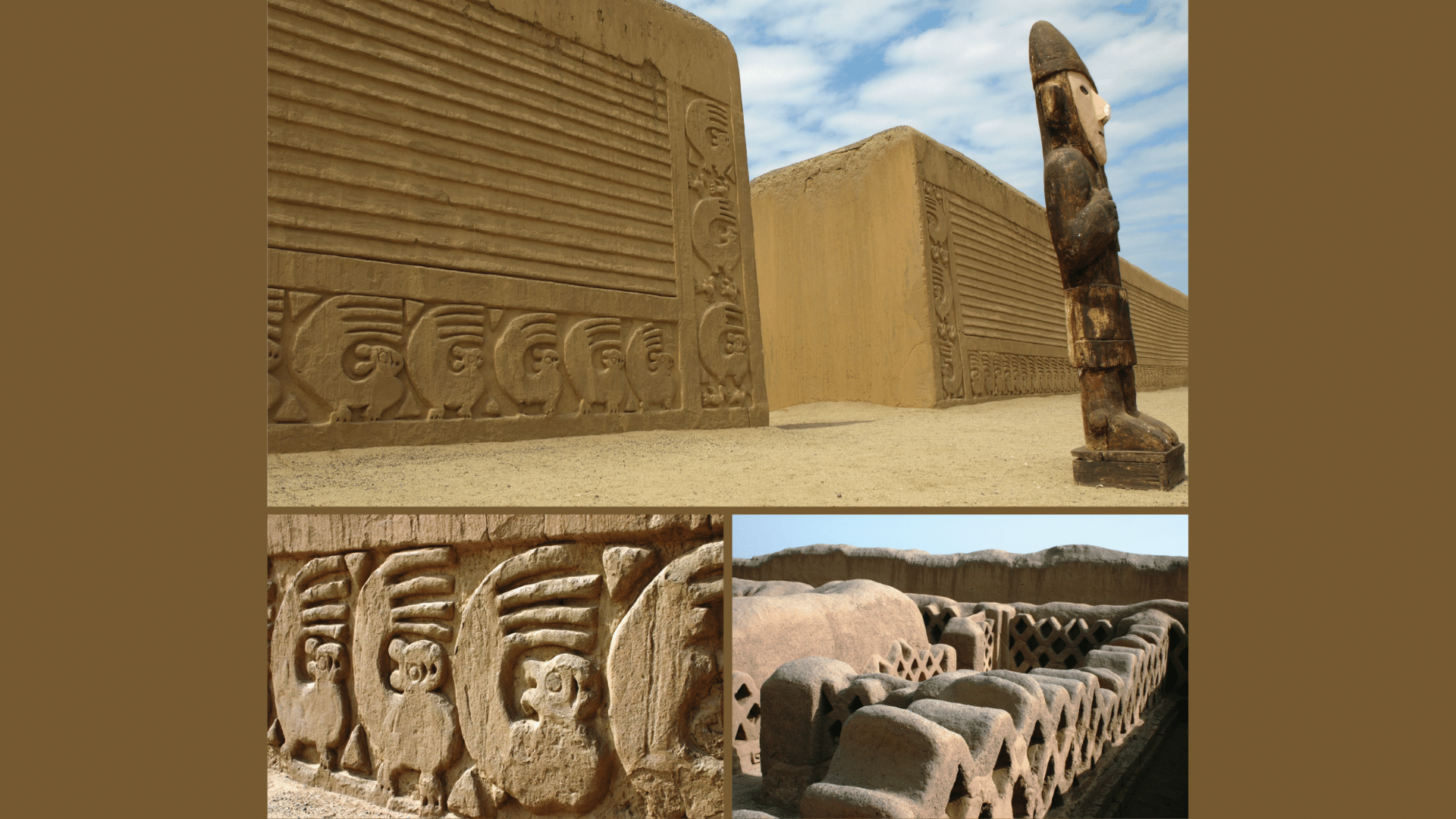
Ancient traditions and historic landmarks make Peru a treasure trove of cultural significance.
Check out these facts.
20. People have Lived in Peru for Thousands of Years
People have lived in Peru for about 15,000 years. Long before the famous Inca Empire, many ancient cultures made their homes across Peru.
These early people built cities, farmed the land, and created their own ways of life in the mountains, along the coast, and in the jungle.
21. The Inca Empire was the Biggest in the Americas
The Inca Empire’s strong organization, smart farming, and amazing building skills helped them control a huge area.
- The Inca Empire was the largest in pre-Columbian America.
- Their empire covered parts of several South American countries.
22. The Incas Spoke Quechua and Built Stone Cities
The Inca people are known for building amazing cities with giant stone walls. Machu Picchu is one of their most famous creations and still stands today.
- Their buildings used no cement, just perfectly cut stones.
- The Inca Empire stretched across much of western South America.
23. The Inca Empire had About 10 Million People
The Inca Empire was one of the largest in the Americas, spreading across diverse regions like mountains, coasts, and forests. It had a powerful government and clever systems to manage its huge population.
- The empire included many groups and languages under one rule.
- The Spanish conquered the empire in the 1500s.
24. Peru Became Independent in 1821
Ending Spanish colonial rule, Peru became an independent country in 1821.
- Gaining independence marked the start of a new chapter for Peru and gave its people control over their own future.
25. Cusco was the Inca Capital and Still Matters Today
Cusco was the heart of the Inca Empire. Today, it remains an important cultural and historical city visited by millions of people who want to learn about Inca life.
Cusco was the capital of the Inca Empire. It is now a major tourist spot in Peru.
26. Peru has About 34 Million People Today
As of 2025, about 34 million people live in Peru. Its population is made up of many different cultures, backgrounds, and languages, creating a rich and diverse society.
- People come from many ethnic and cultural groups.
27. Most Peruvians Live in Cities
Over 70% of Peruvians live in cities instead of the countryside. Large cities like Lima and Arequipa have grown quickly and are now the center of daily life and jobs.
- More than 70% of Peruvians live in urban areas.
- Lima and Arequipa are the biggest cities in Peru.
28. Peru has Many Ethnic Groups
Peru is home to a mix of people from many different backgrounds. Mestizos, Indigenous groups, Europeans, Africans, and Asians all live together.
They share their customs, foods, and traditions, making Peru a country full of rich and diverse cultures. This mix of people is an important part of what makes Peru special and unique today.
29. Spanish is the Main Language
Many Peruvians speak Spanish today, but Indigenous languages like Quechua and Aymara are still heard, especially in rural communities, helping preserve ancient cultures and traditions.
- Spanish is common, but Quechua and Aymara remain strong in rural Peru.
30. Mestizos are the Largest Group in Peru
Mestizos, who have both Indigenous and European ancestry, make up about 60% of Peru’s population. They play a big part in shaping modern Peruvian culture and identity.
- Mestizos are the largest ethnic group in Peru.
- Their traditions blend Native heritage with Spanish influences.
31. Catholicism is Common, but Other Beliefs Remain
Most Peruvians are Catholic, a religion brought by the Spanish. Still, many Indigenous people continue to follow their traditional spiritual beliefs and mix them with Catholic practices.
- Catholicism is the most practiced religion in Peru.
- Ancient rituals and festivals are often blended into modern faith.
Culture & Traditions
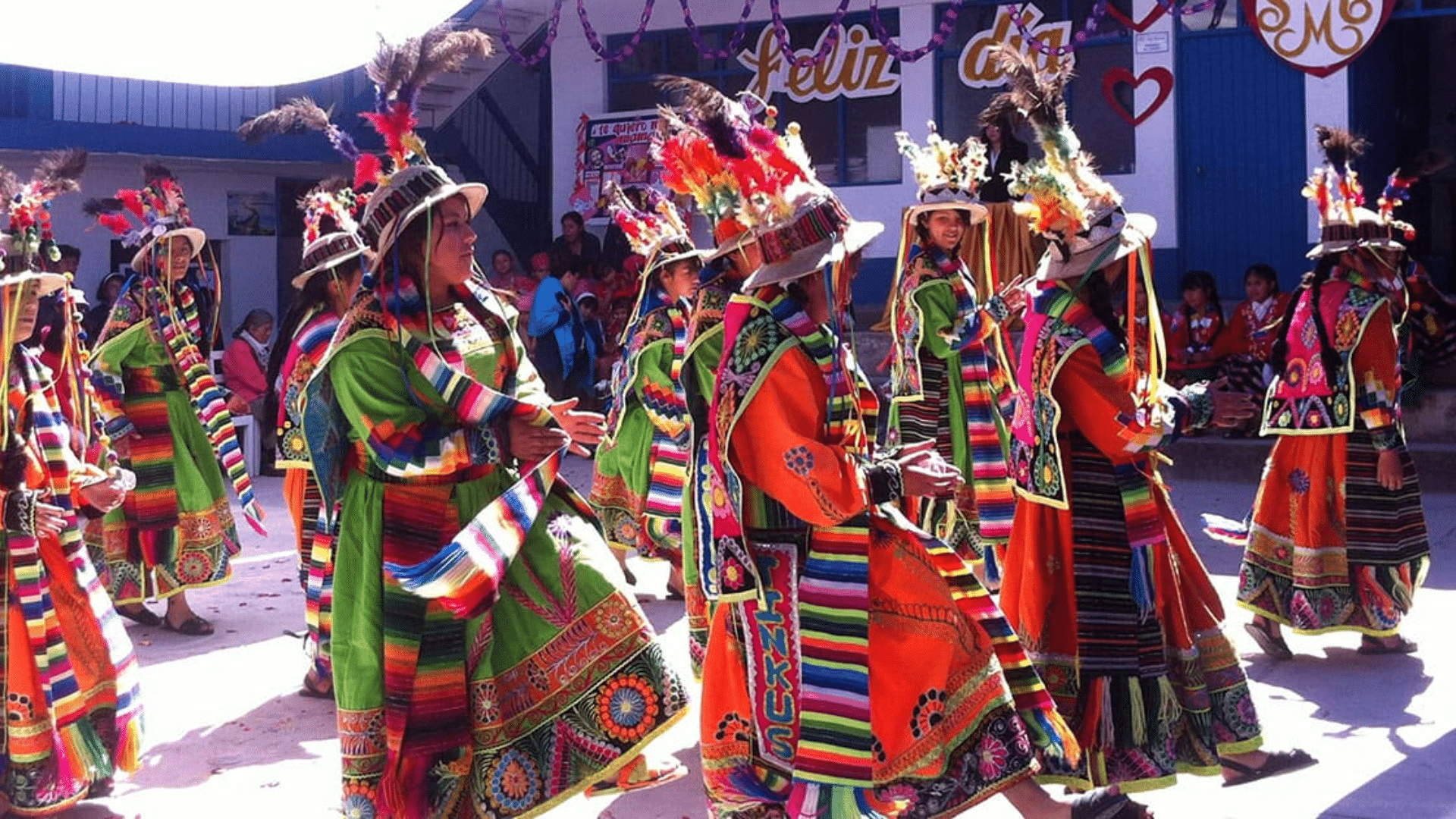
From sacred rituals to joyous festivals, Peru’s traditions tell its deep-rooted history.
Look out for these cultural highlights.
32. Peru has Many Colorful Festivals
Peru is famous for its bright and joyful festivals. These events mix fun, music, costumes, and old traditions. One of the most popular festivals is Inti Raymi in Cusco.
- Festivals often honour historical events or religious beliefs.
- Locals and tourists travel from far away to join the celebrations.
33. Inti Raymi Celebrates the Sun God
Inti Raymi is called the Festival of the Sun. It celebrates Inti, the Inca sun god. People wear bright costumes, dance, and perform traditional shows to honor Inca history.
- This festival is a way for Peruvians to remember and respect their ancestors.
- It takes place each year in Cusco and brings history to life for everyone.
34. Peru has Many Traditional Dances
Peruvians love dancing, and each region has its own style. Dances like marinera, huayno, and zamacueca are performed with special costumes and music that show Peru’s deep traditions.
- Dances often tell stories through music, steps, and outfits.
35. Peru Celebrates the Day of the Dead
In Peru, families honor loved ones who have passed away on the Day of the Dead. They share memories to keep their spirits close.
- Families build altars with flowers, food, and photos.
- The Day of the Dead is a time to remember ancestors.
36. Peru is Known for Beautiful Handicrafts
Peruvian people make beautiful handmade crafts such as woven fabrics, pottery, and embroidery. These crafts are full of bright colors and traditional designs.
Each item tells a story from Peru’s long history. They showcase the creativity and skill of the artists, passed down from one generation to the next.
Crafts are an important part of Peru’s culture and identity.
Cuisine & Gastronomy
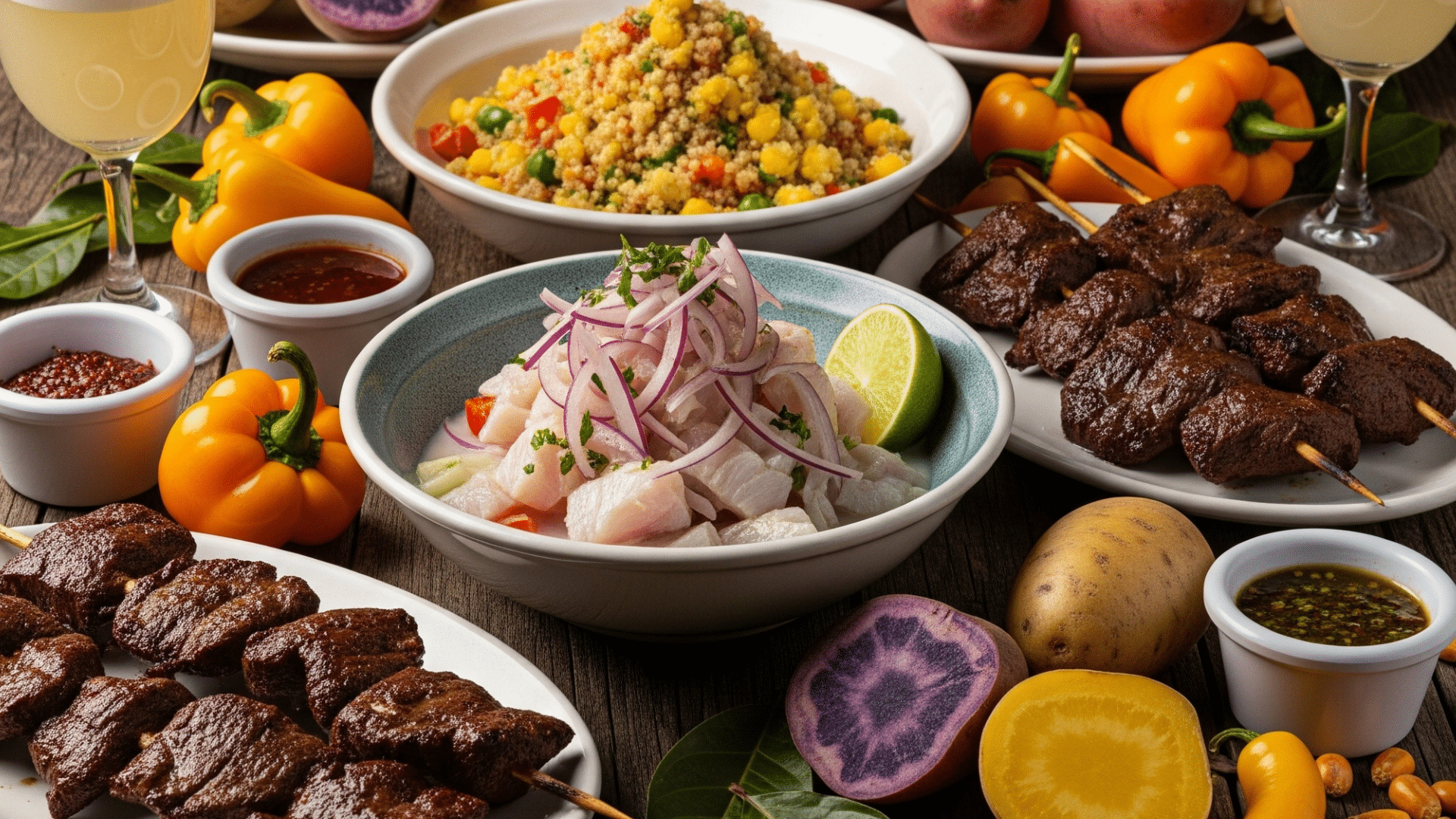
Rich flavors and cultural influences make Peruvian cuisine truly special. Find these must-learn culinary traditions.
37. Peru has Over 3,000 Kinds of Potatoes
Peru is the birthplace of the potato. It has thousands of potato varieties in many shapes and colors, representing the country’s rich farming history and love for native crops.
- Potatoes appear in many traditional dishes.
- Different regions use unique potatoes in special dishes.
38. Ceviche is a Famous Peruvian Dish
Ceviche is raw fish marinated in lime juice, often served with onions and corn. It is a national favorite, especially near the coast, where fresh seafood is easy to find.
- It is often enjoyed cold and served as a refreshing appetizer.
39. People Eat Guinea Pigs in the Andes
In the Andes, people enjoy guinea pig, or cuy, especially during celebrations. Though it may surprise visitors, this dish is a long-standing tradition full of history and cultural meaning.
- Cuy is a traditional dish cooked on special holidays.
- It is often roasted or fried in mountain towns.
40. Peru’s National Drink is Pisco
Pisco is a traditional drink that plays an important role in Peruvian celebrations and is enjoyed across the country in many forms.
- Pisco is a grape brandy used in Peru’s famous Pisco Sour cocktail.
41. Peru’s Food Mixes Many Cultures
Peruvian cuisine mixes many cultures and food traditions. Ingredients come from the coast, mountains, and jungle areas.
Peruvian food brings together flavors from Indigenous, Spanish, African, Chinese, and Japanese cultures. This mix creates a delicious and unique cuisine that people around the world love to explore.
42. Coca Leaves are Used in Rituals
In the Andes, people still use coca leaves in spiritual and traditional ceremonies. These rituals honor nature, thank the Earth, and connect communities to ancient Andean customs and beliefs.
- Coca leaves are seen as a gift from nature in the Andes.
- They play a key role in spiritual offerings and blessings.
Modern Peru
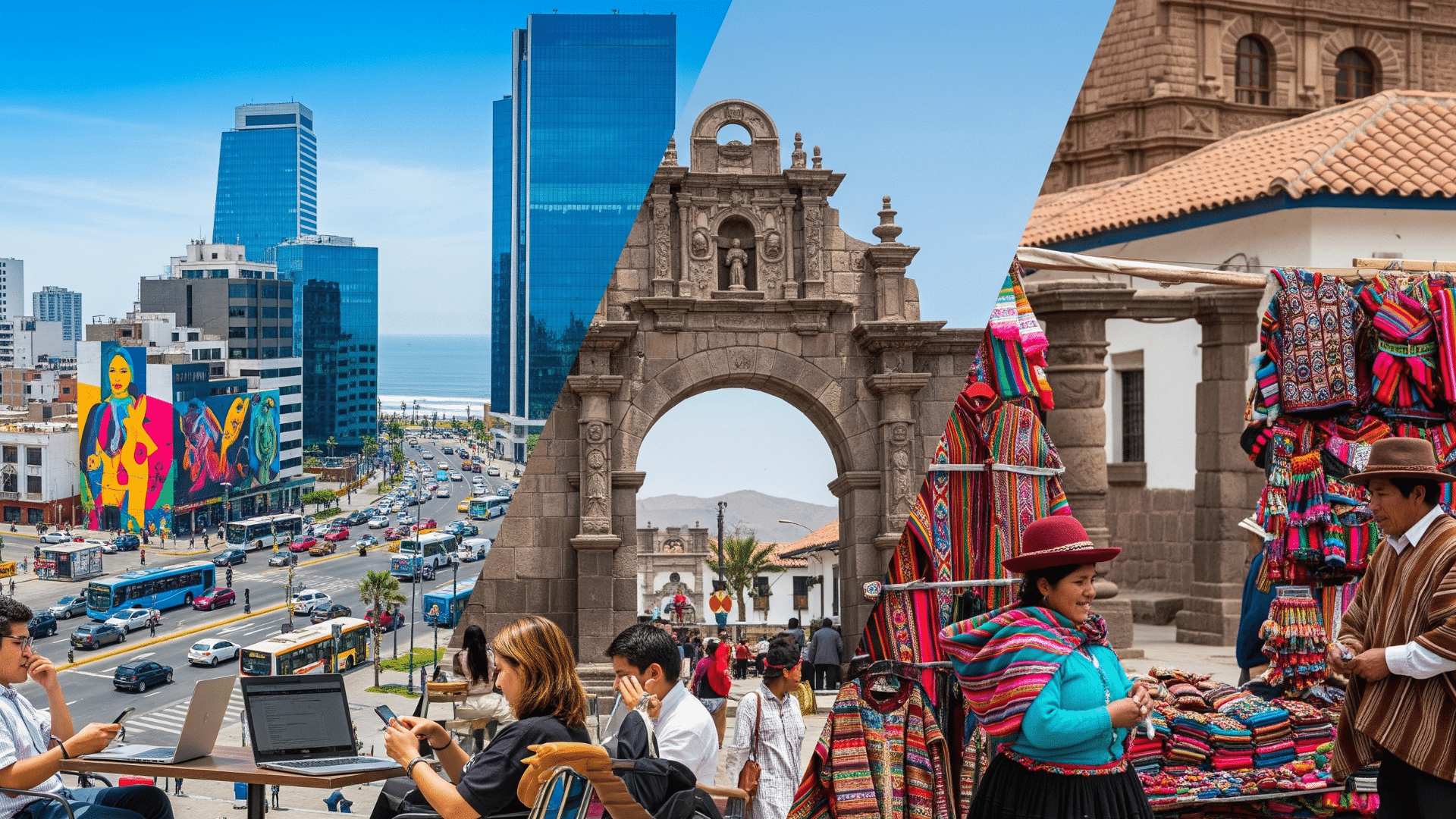
While modernization advances, Peruvians maintain a strong connection to their history, balancing tradition with contemporary living.
43. More Students are Going to School
Education is a big focus in Peru. More kids and teens are finishing school than ever before, helping them build brighter futures in both cities and rural communities.
- Education levels are improving across the country.
- Many more young people are now attending school.
44. Phones and the Internet are Common
Technology is growing in Peru. Most people, especially in cities, use mobile phones and the internet every day for work, school, and staying connected with others.
Cell phones are widely used in urban areas. Internet access is growing, even in rural places.
45. Most People Live in Cities Now
Urban life is expanding, and cities like Lima are home to most of the population. These cities combine modern buildings with local traditions, creating a mix of old and new.
- Lima and Arequipa are large cities with many people.
- City life includes both modern and traditional culture.
46. Peru is Improving its Roads and Services
Peru is working hard to upgrade its transportation and public services. New roads, bridges, and better utilities are helping cities and towns grow and improve everyday life.
- Roads, water, and public buildings are being improved. New projects help communities in cities and villages.
47. Lima is a Busy Global City
Lima is the capital of Peru and a center for business and travel. With new businesses, restaurants, and international visitors, it is growing fast and shaping Peru’s future.
- Lima has many global companies and growing industries.
- Tourists visit for food, shopping, and culture.
48. Sports are Very Popular in Peru
Peruvians love sports, especially soccer and volleyball. People play them at school, at home, or in local parks, cheering for their favorite teams and celebrating wins together.
- Sports are a fun way for friends and families in Peru to spend time together.
- Big matches often turn into fun community events with lots of energy.
49. Lima has a Lively Art and Culture Scene
Lima has museums, music festivals, and art shows. It is a great place to explore culture and history.
The capital city of Lima is full of museums, theaters, and events. From history to music, the city celebrates creativity and offers fun things to do for everyone.
50. Peru Mixes Old and New Ways of Life
Peru is a blend of tradition and change. People still celebrate ancient customs, even as they embrace modern technology, fashion, and new ways of living every day.
- Traditional culture lives on in food, dress, and holidays.
- Modern life includes phones, schools, and city living.
51. Peru is Growing in Science and Invention
Peru is investing in science and technology. Young inventors and researchers are working on clean energy, better farming tools, and health solutions to improve life for people across the country.
Students and scientists are creating smart solutions for local problems. New tech helps farming, healthcare, and the environment.
If you dream of hiking ancient trails or tasting flavours you have never tried before, Peru offers more than just a trip; it provides a deeper connection to land, people, and story.

